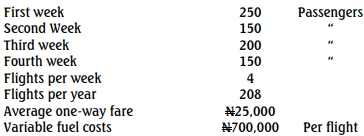- 20 Marks
AAA – Nov 2022 – L3 – SB – Q3 – Audit Reporting
Examines joint auditors' roles, options for audit disputes, acquisition processes, and reporting requirements.
Question
During the audit of Kofo Plc in 2018, it was observed that there was an omission of liability to the tune of N2 billion. Upon investigation, it was discovered that the error was as a result of unrecorded liability relating to unremitted statutory taxes to the government in prior years. A compensating error was noticed in unsubstantiated investment and receivables balances schedule provided by the management.
The explanation provided by management for this error was that having noted this disparity, the internal audit team was commissioned to reconcile the ledger balances to establish the actual payment to be made to the government. The result of that exercise led to an initial adjustment of N500 million. However, upon further review by the Internal Audit and Risk Management team, the total disparity noted was N5 billion as opposed to the N2 billion initially noted. The reason being that the report with which the Internal Audit Team carried out the reconciliation was understated. Some liability balances were excluded from the report as a result of the approach used to set up the Information System (I.T) System. Therefore, the general command entered into the system to spool the report did not capture the entire transactions. To gain comfort, the audit team:
(i) Reviewed the reconciliation memo to have an understanding of management’s thought process;
(ii) Requested the updated spool of ledger balances from the I.T system;
(iii) Asked the Information Technology team to perform a walkthrough test of the transaction spool;
(iv) Requested the breakdown of the excluded balances and traced them to the supporting documents to which they relate; and
(v) Checked to see that there were no unusual remittances from the bank statements.
You are a member of the audit team which reviewed Kofo Plc’s compliance with International Standards on Auditing (ISA 250) on Non-Compliance with Laws and Regulations (NOCLAR).
Required:
a. Outline the audit procedures to be performed to help identify instances of non-compliance with laws and regulations. (5 Marks)
b. State what the auditor should do when they become aware of an issue of non-compliance with laws and regulations. (5 Marks)
c. State the types of policies and procedures the entity may implement to assist in the prevention and detection of non-compliance with laws and regulations. (4 Marks)
d. Discuss what the auditor should do under the following situations:
- i. Reporting non-compliance to those charged with governance (2 Marks)
- ii. Reporting non-compliance in the audit report (2 Marks)
- iii. Reporting non-compliance to the authorities (2 Marks)
(Total 20 Marks)
Find Related Questions by Tags, levels, etc.

